Paddle Boarding for Beginners
Paddle boarding is literally the one watersport that EVERYONE CAN DO! We always hear people saying that they can’t paddle board because they do not have good balance, our answer to this thought process is – We have a board for you 🙂 There is a plethora of boards on the market today designed for every activity. The one thing to remember for balance is the width of the board will determine the stability. When looking for the right board for you – look for a board that will work for you. Alright, lets talk about our top 10 tips for beginners.
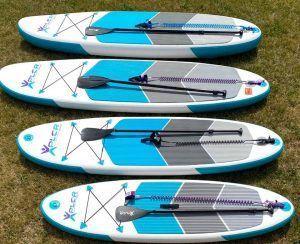 1. Board – Inflatable / Hard board / Activity If you are looking to use your board for speed, then you want to do your research and look for a board that is designed with speed in mind (a smaller width and longer board.) If you are looking do yoga – There are boards designed especially for that as well. Maybe you are looking for an all around board because you don’t feel like you have good balance – Look for a wider width board this will give you a little more stability. Another thing to remember is Inflatable boards are a great option.
1. Board – Inflatable / Hard board / Activity If you are looking to use your board for speed, then you want to do your research and look for a board that is designed with speed in mind (a smaller width and longer board.) If you are looking do yoga – There are boards designed especially for that as well. Maybe you are looking for an all around board because you don’t feel like you have good balance – Look for a wider width board this will give you a little more stability. Another thing to remember is Inflatable boards are a great option.
2. Location – It’s best for beginners to try a pond or a calm lake, one without a lot of boats. This will help you gain your “sea legs” Choosing calm body of water will help you gain confidence to be secure in your paddle boarding abilities.
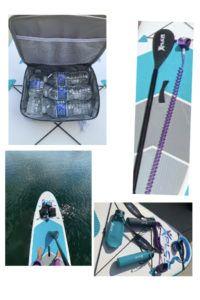
3. Accessories – Let’s look at the accessories that you will want to think about. First and foremost you need a Personal Flotation Device (Safety First). Next an ankle leash is a good option because when you fall of your board this will keep you close by your board. A waterproof bag is another good option because this will keep your belongings dry. Another thing to think about is a good deck cooler, one that you can attach to the bungees on your board (Hydration is important.) If standing is hard for you there are paddle board seats available that will easily attach to your board (This will give you a kayak feel)
4. Paddle – Especially for beginners choose a paddle that floats! This will make it easier to retrieve if you drop it. Make sure that when you are paddling that the paddle is the right height for you. Stand next to your paddle on the ground extend your arm straight up and rest your hand on the handle of the paddle this is the height that you want your paddle. It will feel tall on the ground, but once you are on your board it will feel more normal because you have to take into account the height of the board and the fact that your paddle will be sinking into the water. Make sure that your paddle is facing the right direction – This is imperative. If you find it more comfortable to sit on your board – There are a lot of kayak paddle attachments that you can purchase to make that easier. Last, but certainly not least make sure the paddle is the right size for the paddler.
5. Inspect – It is very important to check your board and accessories. If you have an inflatable board you want to make sure there are no holes, if you have a hard board it is important that there are no cracks or sharp edges. It’s always important to ensure that your board is in good working order.
6. Paddling – When you first get started, a good way to gain your confidence is to start by kneeling on your board. By doing this it will help you to get your balance. While kneeling you can focus more on actually paddling and what that feels like (how to maneuver your board). If kneeling is hard for you paddle boards work great for sitting as well.
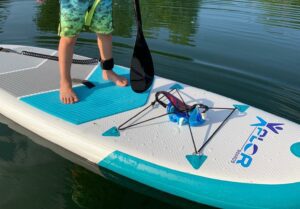
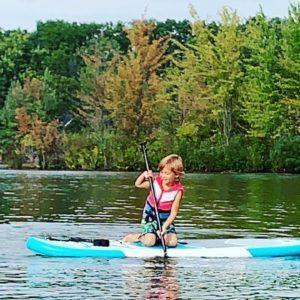
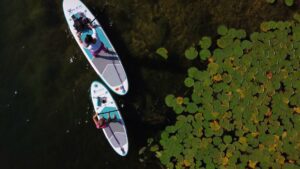
7. Direction – When paddle boarding you want to make sure that you are facing the right direction – Most boards have bungees at the front of the board, this will help you to remember witch way to face, but if the board you are learning on doesn’t have bungees an easy thing to remember is that the fins on the bottom of the board
are always at the back of the board. Remember to stand opposite of the fins. You will feel the difference when trying to paddle if you are standing the wrong way. Another thing to remember is to try to stand in the center of the board feet shoulder width apart (this will give you a good solid base of support.
8. Falling – Funny right 🙂 FALLING – It is really important to get comfortable falling off and getting back on the board. It’s actually a good idea to slowly get off your board and get back on (practicing getting on and off the board while in the water will help give you confidence when you actually fall off) I say when because we all FALL, even professionals. Having confidence knowing what that feels like will help your paddle game because that won’t be a fear that you will have.
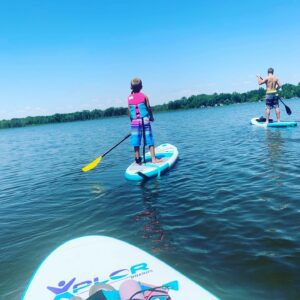 9. Friends – Having friends to paddle with will help. It’s never a good idea to paddle by yourself the first few times that you paddle just because it will be a new experience and you will want some assistance close by if you need it. Don’t feel pressured to paddle for miles. Sometimes the funniest part of paddling is getting to the middle of a lake and laying out on your board or swimming. The buddy system is recommended.
9. Friends – Having friends to paddle with will help. It’s never a good idea to paddle by yourself the first few times that you paddle just because it will be a new experience and you will want some assistance close by if you need it. Don’t feel pressured to paddle for miles. Sometimes the funniest part of paddling is getting to the middle of a lake and laying out on your board or swimming. The buddy system is recommended.
10. FUN- Most of all relax and have fun! Paddle boarding does not discriminate! All ages, sizes, and activity levels are welcome- There is a board for you!
Paddle boarding is the fastest growing watersport for good reason. Once you try it you will fall in love with it.
Feel free to reach out and let us know if you have any tips or tricks that may have missed – Thanks!
WORRY LESS PADDLE MORE
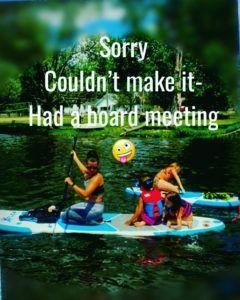
“HAPPY PADDLING”

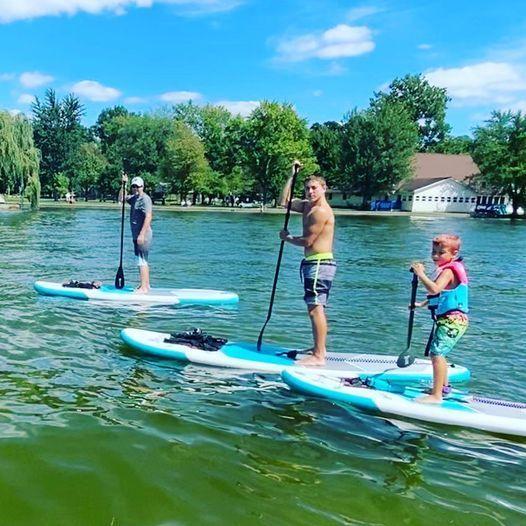
Recent Comments